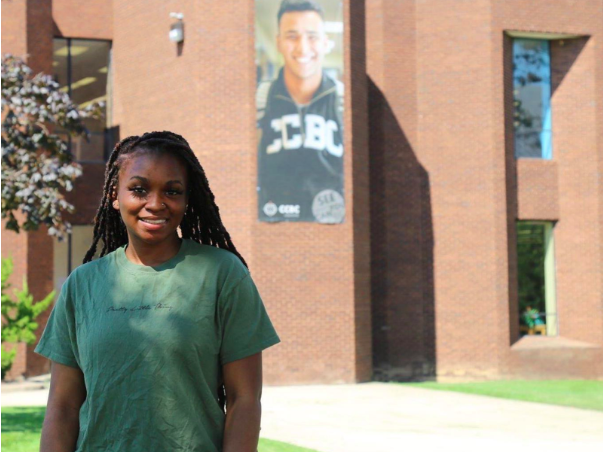
Uncovering CCBC’s Invisible History
As part of acknowledging our past as a country, we are working to learn about the land upon which we work, live, and study. Sometimes, that means discovering complex and traumatic historical events that took place under our very feet. In this month’s Invisible History blog, we’d like to shed some light on the land that CCBC stands on and what lessons from our past we can learn about today.
While CCBC’s Catonsville campus now encompasses many modern buildings, parking lots, and areas of recreation, among the contemporary architecture lies the well-known Hilton Mansion and the Stone Barn. The Hilton Mansion and the Stone Barn are two structures that pre-date the founding of CCBC — and as recent research has uncovered, were both built by enslaved people who lived on the premises. Students, as part of the Invisible History series at CCBC, recently came to learn about this fact, and were understandably shocked. Yet the more we uncover the history of our area, the more sites we discover belonged to slave owners and enslaved people.
CCBC is not alone in discovering its origins and history. In fact, it’s one of ninety schools making up the consortium of Universities Studying Slavery, including Johns Hopkins University, Towson University, and the University of Maryland. Together, these schools, “work together as they address both historical and contemporary issues dealing with race and inequality in higher education and in university communities, and seek to address the complicated legacies of slavery in the modern world.”
That complex legacy is ever more evident when we acknowledge how many hidden mysteries there are about the land around us, who settled it, and how it was settled. The discoveries behind the Hilton Mansion and the Stone Barn may be unsettling, but we now have solved one missing piece of the past. Michelle Wright, a professor of history and Africana studies at CCBC has been instrumental in teaching her students about the history of slavery on CCBC’s land. She said, “This history, it really isn’t invisible. You can actually look at it. You can actually see some of the things that were built and you can imagine some of the stories.” Wright also pointed out the bitter irony of some of the historical events that took place, including how enslaved men often had to make the very shackles and collars that would enslave them.
As part of their Invisible History project for the Humanities for All initiative, students were invited to attend multiple talks on the origins of Catonsville’s buildings and its links to its early African American community, the importance (or lack thereof) of monuments marking historical moments and memorable figures, and more. Students were also invited on a field trip, guided by Louis Diggs, an expert in local African American history. They were able to visit places of historical importance to the African American community in Baltimore County, including historically Black residential communities, religious institutions, and even a museum that Louis is developing dedicated to Baltimore County’s Black history.
At the end of this series, a forum took place with students and invited experts to further explore the series’ themes as they related to the recently renovated Hilton Center building. Topics centered on reclaiming the history of the “invisible” inhabitants of the mansion, its grounds, and its neighboring communities. The event included a speaker panel, mansion tour, and reception.
Uncovering the truth about any area deserves respect, research, and recognition. We can all learn from the past and take the lessons we learn to ensure that people now are treated with the dignity they deserve. To quote Maya Angelou, “We cannot change the past, but we can change our attitude toward it.”
To learn more about Invisible Histories at CCBC, please contact Wendell Johnson at wjohnson5@ccbcmd.edu.

